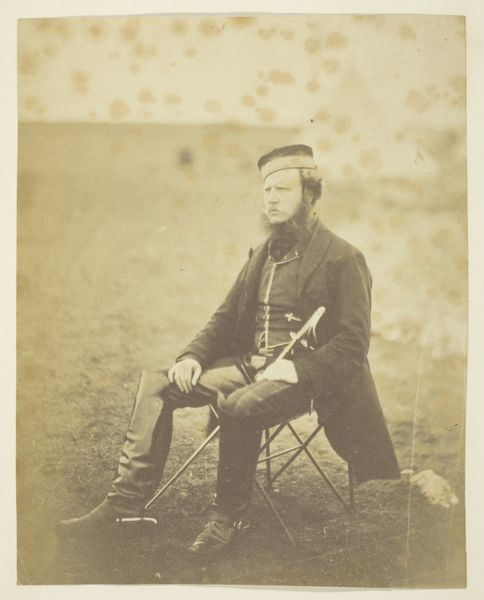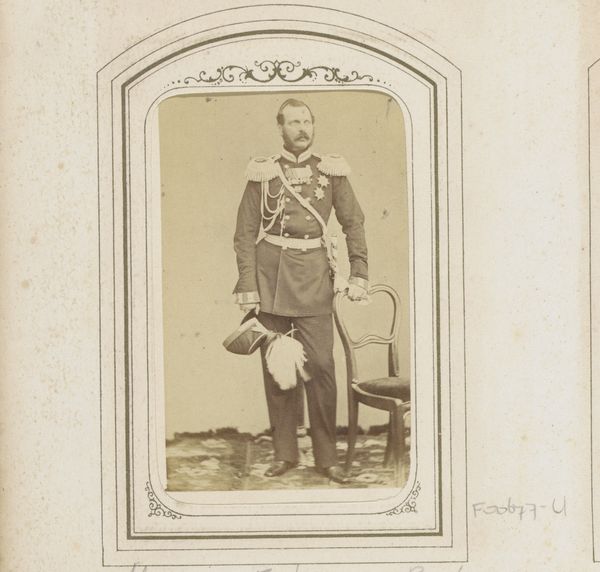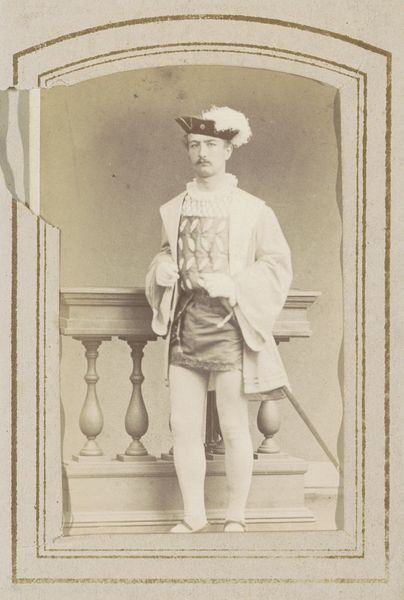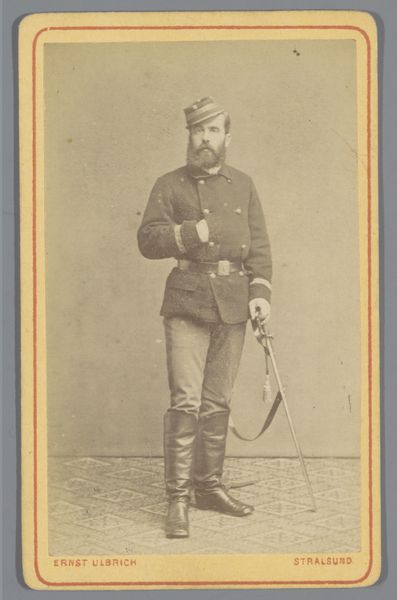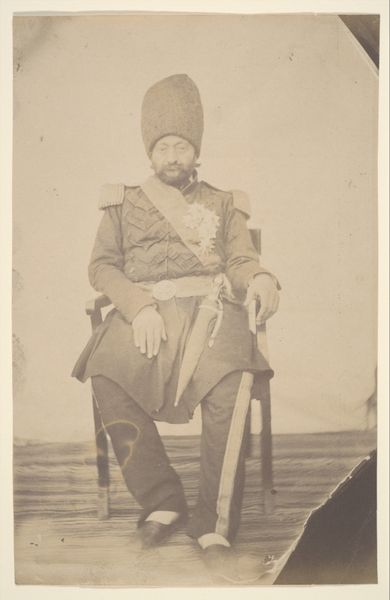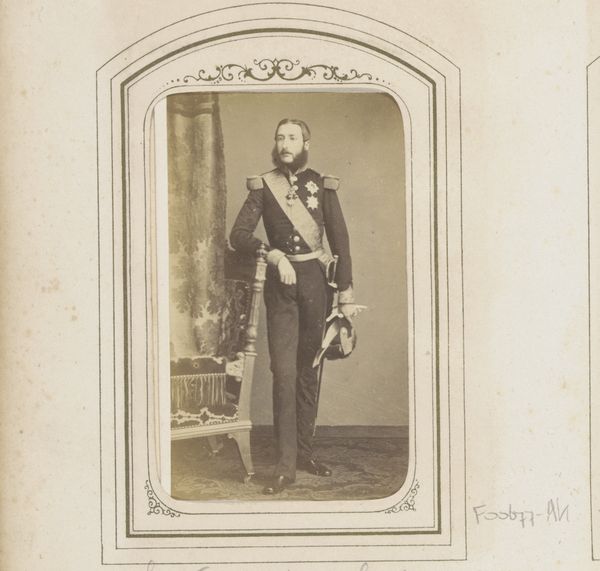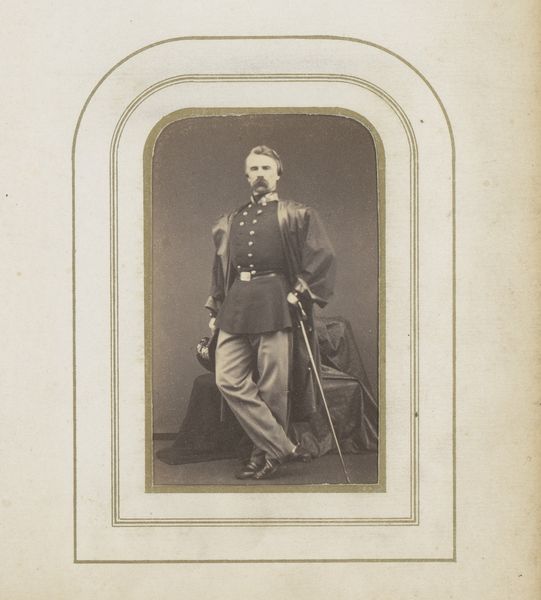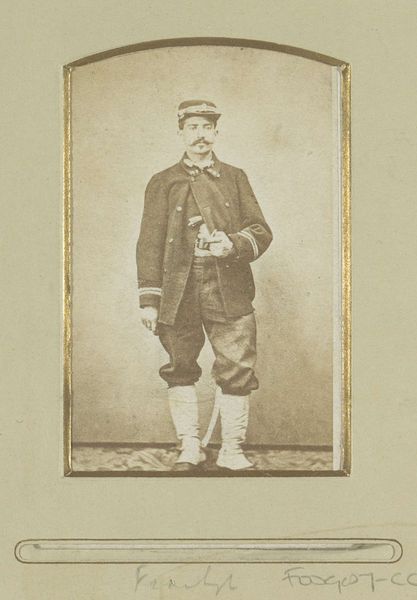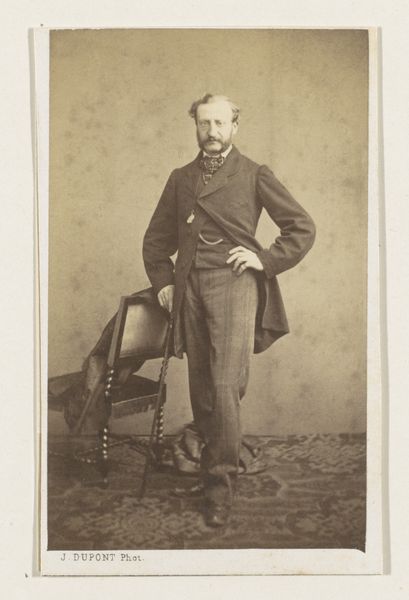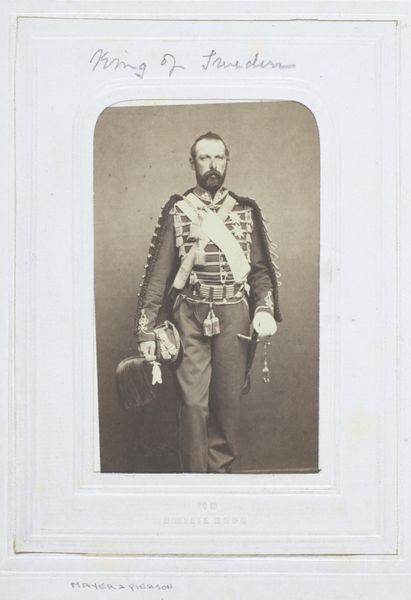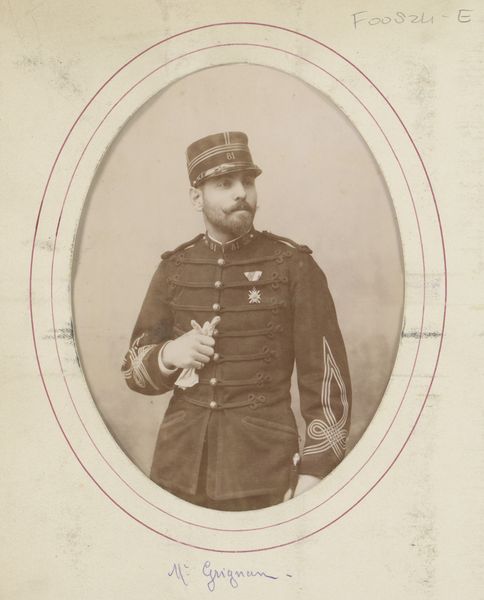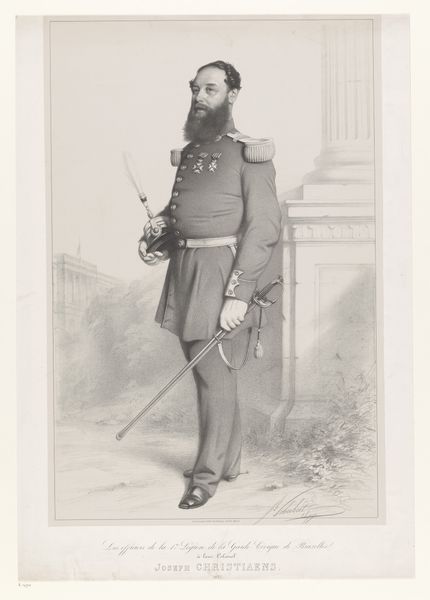
Thomas Graham Russell (1748-1843), General, Taken at the Crimea 1855
0:00
0:00
Dimensions: 19.1 × 15.5 cm (image/paper); 30.3 × 23.1 cm (mount)
Copyright: Public Domain
Editor: Here we have Roger Fenton’s 1855 photograph, "Thomas Graham Russell (1748-1843), General, Taken at the Crimea," now residing here at the Art Institute of Chicago. It strikes me as very stoic, but there is something forlorn about it. How do you interpret this work, especially considering the context of war? Curator: The figure of the general seated amidst the Crimean landscape holds significant cultural weight. Notice the way Fenton captures him, not in the heat of battle, but in a moment of quiet contemplation, perhaps even weariness. This deliberate choice reflects a shifting public sentiment about war at the time. Editor: So, it’s not just a straightforward heroic portrait? Curator: Precisely. Look at his hands clasped tightly. That gesture could symbolize resilience, but equally, anxiety. Consider also that photography itself was new technology on the battlefield. Fenton was literally framing a new visual language of warfare. What stories do you think his image started telling? Editor: Maybe stories of the human cost of war, beyond just victories and defeats. The image seems very still, as though it were capturing something unseen beyond the soldier. Almost funereal. Curator: Indeed, the stillness evokes a sense of reflection on sacrifice and mortality. That vacant stare really holds a strong message about loss, doesn't it? Editor: I never thought about how photography itself was shaping those narratives back then. Thanks, this gives me a new lens through which to view Fenton’s work. Curator: And perhaps through understanding that early visual rhetoric, we can better appreciate the symbolic power of war imagery today.
Comments
No comments
Be the first to comment and join the conversation on the ultimate creative platform.
